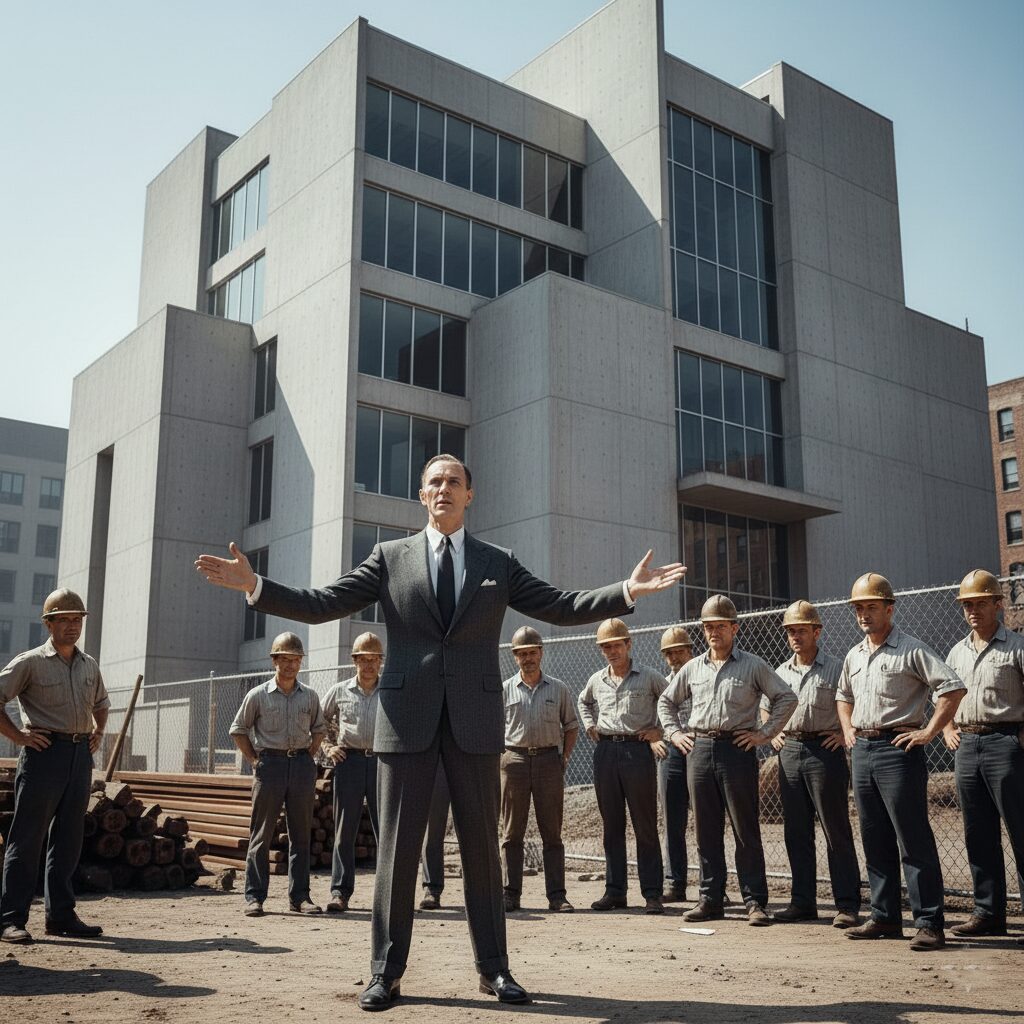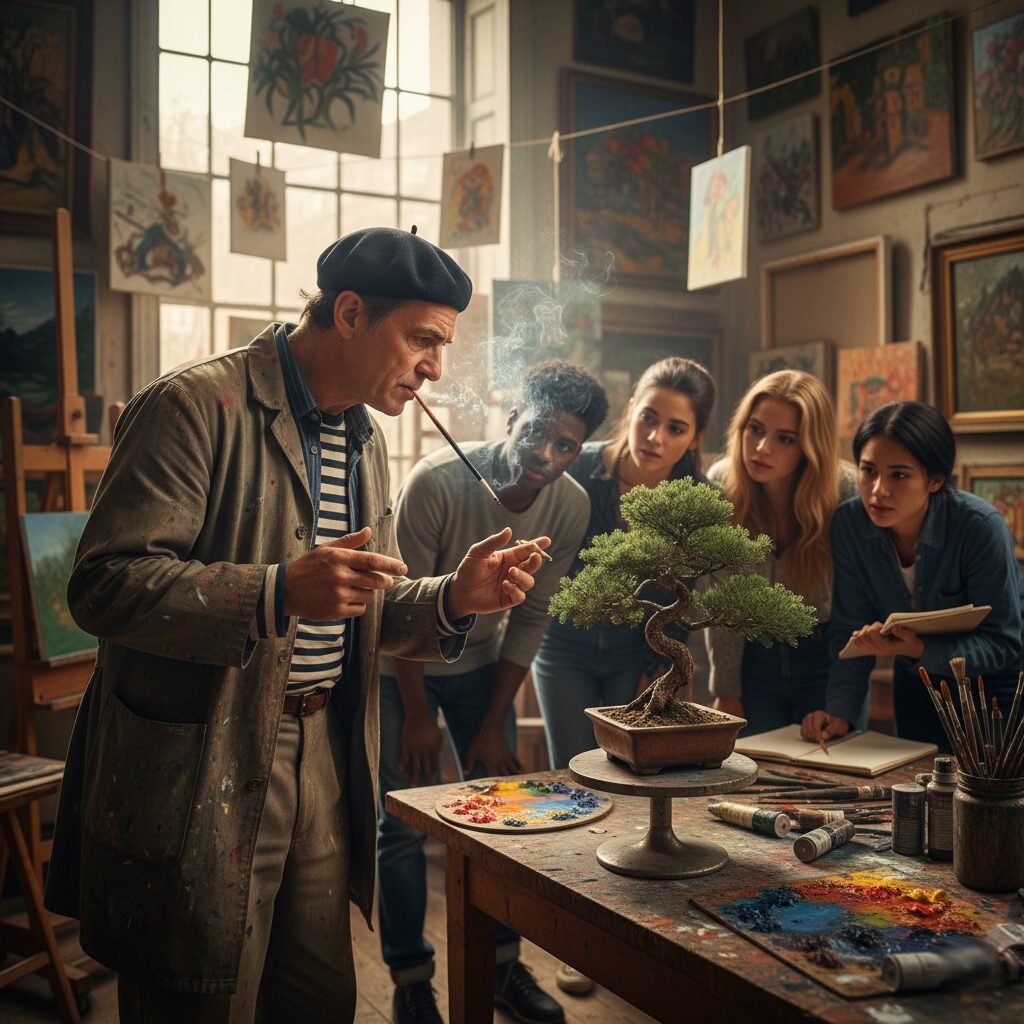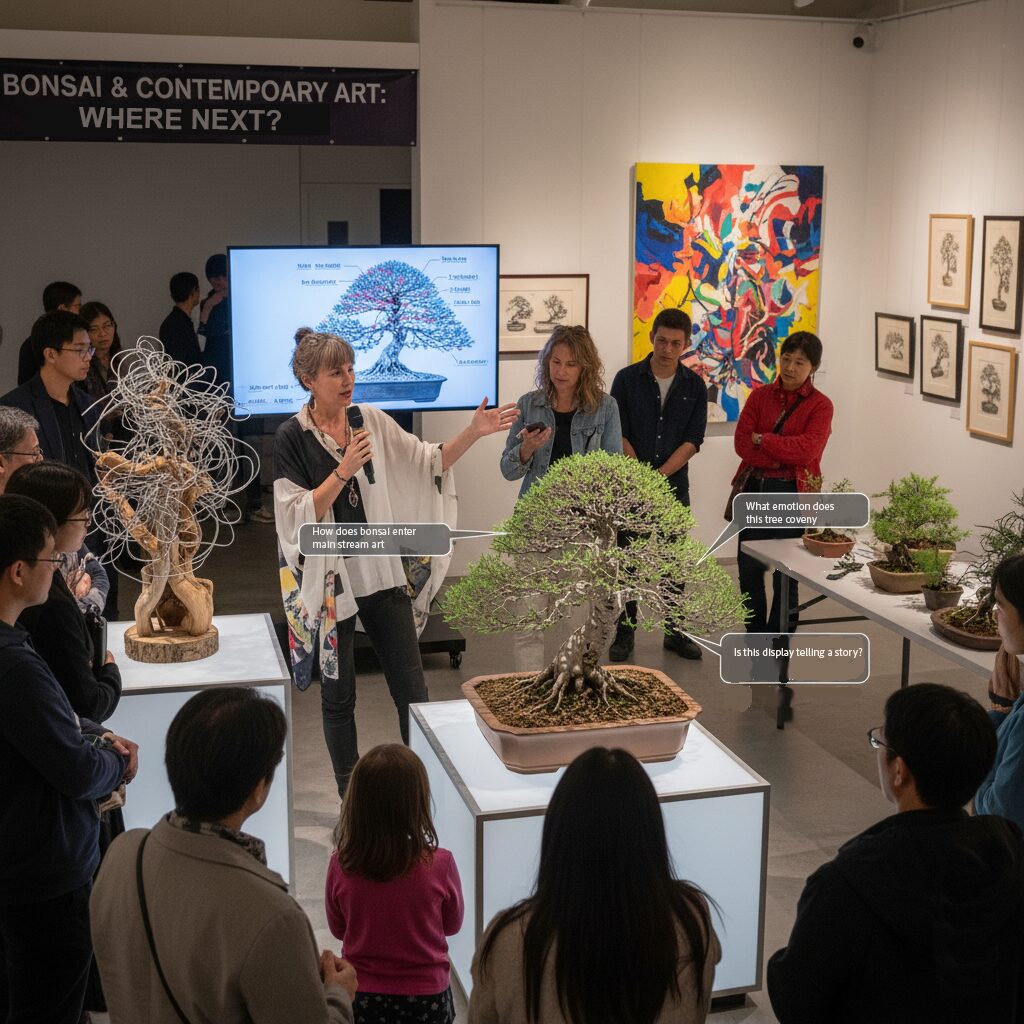

I recently came across a critic—a music critic, in fact. Someone who makes their living evaluating other people’s music. Hmm. The situation reminded me of Ellsworth M. Toohey, the socialist architecture critic in Ayn Rand’s Atlas Shrugged. Toohey writes a column and uses his influence to destroy Howard Roark, the novel’s protagonist and one of my favorite characters in literature. Toohey is designed to rankle the reader, so naturally I was skeptical of the music critic. Yet the encounter made me think of bonsai critiques.
Bonsai Critiques – Yawn-sai?
At nearly every bonsai convention, one of the most prolific events is the critique session. A master artist, often with decades of experience, walks through the exhibit with a group of eager enthusiasts in tow. At each tree, the artist pauses, assesses, and comments. The audience listens closely, hearing once again the reaffirmation of long-established principles: proper taper, branch placement, front selection, balance, proportion, and pot harmony. For many, these critiques serve as a classroom in miniature—a living lecture where the rules of bonsai are reinforced through real examples. This format has endured for decades, shaping how bonsai is taught and judged.
Yet, while valuable, this model has its limits. Because most critiques are led by a single artist, they often reflect a narrow interpretation of bonsai aesthetics. Rules—such as avoiding bar branches or insisting on triangular silhouettes—can be emphasized so strongly that they overshadow creative potential. Rarely are attendees invited to offer their own opinions. It becomes a one-way conduit, leaving some with the impression that there is only one correct way to style a tree. While this approach preserves tradition, it can encourage the dreaded helmet on a stick and worse, constrain experimentation and discourage voices that might push the art in new directions.

Bonsai display critique takes the problem to a whole new level. Formula-driven critique, which focuses narrowly on tree movement, trunk line, or the pot’s color and shape, risks reducing the exercise to a checklist of technical points. While these elements contribute, they only scratch the surface of what a bonsai display is meant to achieve. A display exceeds technical bonsai exercise—it is an artistic composition intended to tell a story, to evoke emotion, and to create an atmosphere that transcends mere horticultural skill. When critiques lean too heavily on pedagogy—on teaching rules and formulas—they often miss the deeper, more subjective purpose of display.
Other art forms offer instructive comparisons. In painting, music, or dance, critique has long since evolved beyond the master-student hierarchy. Areas with vibrant art scenes often host open studios, collaborative workshops, and panel critiques where multiple perspectives are shared. Painters receive feedback not only on technique but also on concept, emotion, and originality. Dancers are encouraged to explore personal movement, even when it breaks classical form. These environments foster innovation precisely because they welcome divergence from the rules. Bonsai could benefit from adopting some of these practices.
For example, when I conducted my walk through of the 2025 Bonsai Society of Florida Creative Exhibit, I didn’t follow the usual critique tropes. At each display the group, guided by me, tried to imagine what story the artist was telling. We never discussed tree design unless it directly impacted the story. To take it further, each participant wrote their impressions on post-it notes. By the end we had over 200 comments reflecting a wide range of responses. Each attendee shifted from passive viewer to active participant. Many comments diverged from the artist’s intent, instead revealing the social context and personal connections of the viewers. In this way, the program delivered far more than the typical critique.
The Realm of the Possible
Imagine if bonsai conventions created spaces for group discussions where artists, historians, and even non-practitioners could weigh in on a tree and its display. Instead of a single authoritative voice, participants might hear a range of perspectives: one praising a tree’s naturalistic style, another appreciating its symbolic meaning, and yet another critiquing its technical execution. Such conversations could deepen understanding and highlight bonsai’s capacity to engage both craft and art.
Approached as a true art, bonsai might even find its way into museums and galleries, framed not only as horticultural curiosities but as living sculptures. Situating bonsai alongside contemporary art forms encourages viewers to see them as expressions of culture and philosophy, not merely technical exercises. Public programs—artist talks, and interactive critiques —could further demystify the art, inviting wider audiences into the conversation. This, in turn, helps cultivate a more diverse community of practitioners who bring fresh ideas to the tradition.

The goal should be to use critique both to preserve bonsai’s heritage and to expand its future. The traditional model of a master reminding students of the rules remains useful for grounding beginners in solid technique. But if bonsai is to thrive as a global art form, critique must also make room for subjectivity, dialogue, and creative risk. Like the practices that nurture painters, sculptors, and dancers, the bonsai world can enrich itself by embracing a more open, multifaceted approach to evaluation—one that reaffirms not only what bonsai has been, but what it can become.
